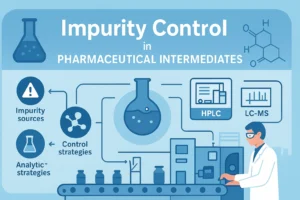Introduction to Adagrasib and Sotorasib
In the landscape of cancer treatment, targeted therapies have emerged as a beacon of hope for many patients. Among these, KRAS inhibitors, specifically adagrasib and sotorasib, have garnered significant attention.
These two drugs represent a new frontier in the fight against cancer, offering promising options for patients with specific genetic mutations.
Overview of KRAS Inhibitors
KRAS inhibitors are a class of drugs designed to target and inhibit the KRAS protein, which plays a critical role in the development and progression of many cancers. KRAS mutations are notoriously difficult to treat, making the advent of these inhibitors a groundbreaking development.
Both adagrasib and sotorasib have shown efficacy in targeting KRAS G12C mutations, a common mutation found in non-small cell lung cancer (NSCLC) and other types of cancer.
What is Adagrasib?
Mirati Therapeutics focuses on pharmaceuticals and KRAS targeting in cancer, and its key drug candidate is adagrasib, an oral small molecule inhibitor. How it is done is through targeting the overexpressed and mutated KRAS protein, which in return reduces its activity and consequently, the proliferation rate of tumor cells.
Early clinical trials have shown adagrasib to be effective; the drug achieved pathways of partial shrinkages of the tumours affecting patients that have NSCLC and colorectal cancer while the side effects of the drug were easily tend with.
What is Sotorasib?
Sotorasib on the other hand is the result of rigorous research done by Amgen. Similar to adagrasib, this one is designed for the KRAS G12C mutation. Among them, sotorasib has taken the lead since it is the first KRAS inhibitor to make it to the FDA’s list of marketed drugs. Its approval stemmed from its demonstration of its aptitude to cause tumor regression in a large enough percentage of the affected patients and offer another form of combating previously invulnerable cancers.
Mechanism of Action: Adagrasib vs Sotorasib
It is therefore possible to gain insights on how effective adagrasib and sotorasib will deliver their health benefits tapping on the knowledge on how they function. The idea of costing is solved in both drugs, but the drugs act differently towards the same mutation which brings a difference in the improvement and unwanted effects of both drugs.
How Adagrasib Works
Hence, adagrasib functions by selectively targeting the KRAS G12C protein, which is a mutated product of the normal KRAS protein that contributes to growth of different cancers. This mutation leads to the overactivity of the KRAS protein and continuous cell division leading to growth of tumor. Because of its relatively small size, adagrasib is capable of covalently binding to the cysteine residue that forms in the KRAS G12C mutation and render the protein configurated in a nonfunctional position.
This inhibition stops strands that encourage growth and division of cancer cells, hence resulting in tumor regression and slow cancers growth. Thus, adagrasib as a therapy is highly selective to limit influence to normal cells and, thus avoid side outcomes.
How Sotorasib Works
Sotorasib similarly targets the KRAS G12C mutation but while binding to the protein it uses a mechanism that is principally different from that of adagrasib. Sotorasib directly and covalently targets the active site of the mutant KRAS protein thereby inactivating it. In this case, sotorasib binds to KRAS G12C protein and keeps it in an inactive conformations thereby inactivating the downstream signaling pathways that promotes growth and survival of cancer cells.
The irreversible binding also lets the molecule remain tightly bound to the target, thus eliciting a long-lasting inhibition which is paramount in checkmating cancer cells. In the process of Sotorasib creation, there were special efforts made to increase its specificity and high efficiency to achieve the maximum therapeutic effect with minimal side effects.
Comparative Analysis of Their Mechanisms
Although adagrasib and sotorasib are designed to target the same KRAS G12C mutation, the variation in their binding profiles may significantly affect their effectiveness and the patients’ well-being. The ability of the new agents, such as adagrasib, to exert selective binding and have reversible action may be useful in terms of the variation of doses and interaction with other medications, whereas sotorasib’s irreversible binding, though it provides time-independent inhibition, could benefit particular clinical situations.
The differences in their action plan can also influence their ability to be metabolized within the body and the way that they interact with other administered medications, it is for this reason that oncologist ought to examine these factors as they choose the right treatment regiment for their patients.
Side Effects and Safety Profiles: Adagrasib vs Sotorasib
As with any cancer treatment, understanding the side effects and safety profiles of adagrasib and sotorasib is crucial for both patients and healthcare providers. These aspects play a significant role in treatment decisions, impacting patient quality of life and the overall management of cancer.
Common Side Effects of Adagrasib
Adagrasib, like many targeted cancer therapies, comes with its own set of side effects. Commonly reported adverse reactions include gastrointestinal issues such as nausea, vomiting, and diarrhea. Patients may also experience fatigue, decreased appetite, and liver enzyme elevations, which require monitoring through regular blood tests.
While most side effects are manageable and can be mitigated with supportive care, it’s important for patients to communicate any discomfort to their healthcare team promptly. Understanding and managing these side effects is essential to maintaining a patient’s overall well-being during treatment.
Common Side Effects of Sotorasib
Sotorasib shares some similar side effects with adagrasib, given that they target the same KRAS G12C mutation. Patients commonly report gastrointestinal symptoms, including diarrhea, nausea, and vomiting.
Additionally, liver toxicity is a concern with sotorasib, necessitating regular liver function tests to monitor for potential issues. Other side effects can include fatigue, musculoskeletal pain, and changes in blood cell counts. Managing these side effects requires a proactive approach, with healthcare providers ready to offer interventions such as anti-nausea medications, dietary adjustments, and regular monitoring to ensure patient safety.
Conclusion
In the realm of targe ted cancer therapies, adagrasib and sotorasib stand out as pioneering treatments against KRAS G12C mutations. Their unique mechanisms of action provide promising options for patients with difficult-to-treat cancers, offering hope where traditional therapies have fallen short.
Adagrasib and sotorasib each bring their own strengths to the table. Adagrasib’s selective binding approach and potential for reversible interactions offer flexibility in treatment regimens. In contrast, sotorasib’s irreversible binding ensures a sustained inhibitory effect that may be particularly beneficial in specific clinical scenarios.
Both drugs have shown impressive efficacy in clinical trials, demonstrating significant tumor shrinkage and disease control in patients with non-small cell lung cancer and other cancers harboring the KRAS G12C mutation.
If you have any questions about the choice of these two medicines, please consult our expert team to provide you with answers.



